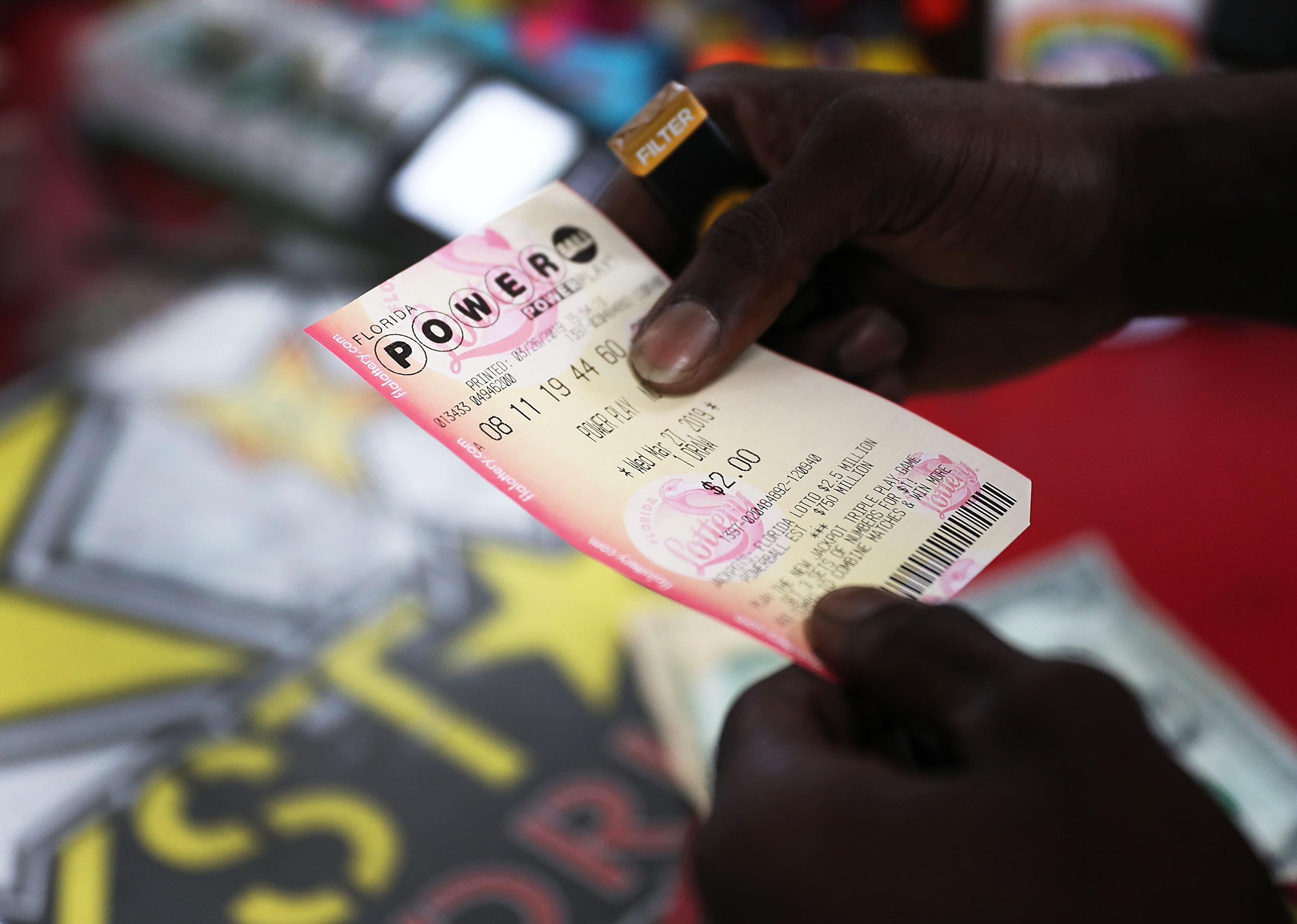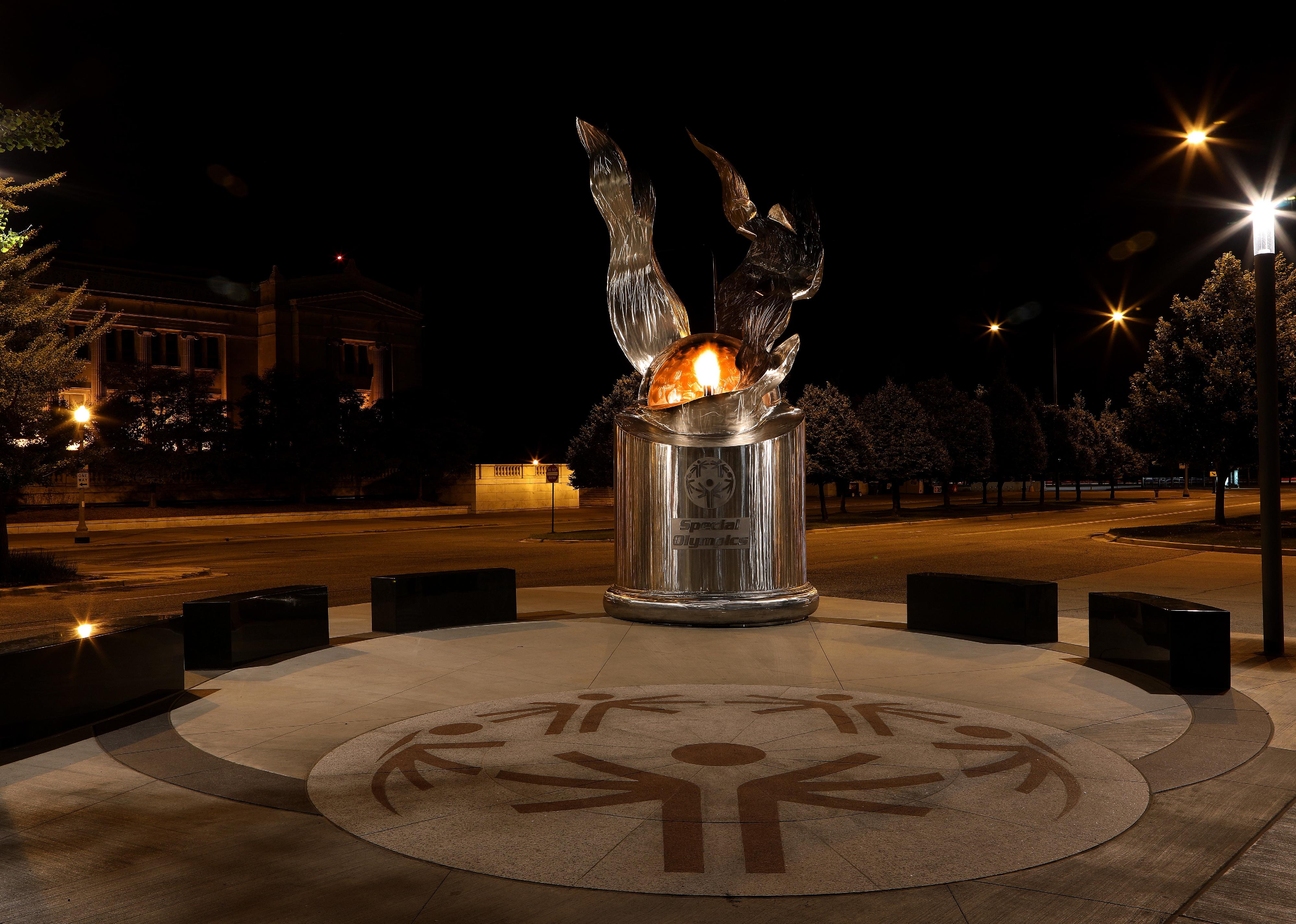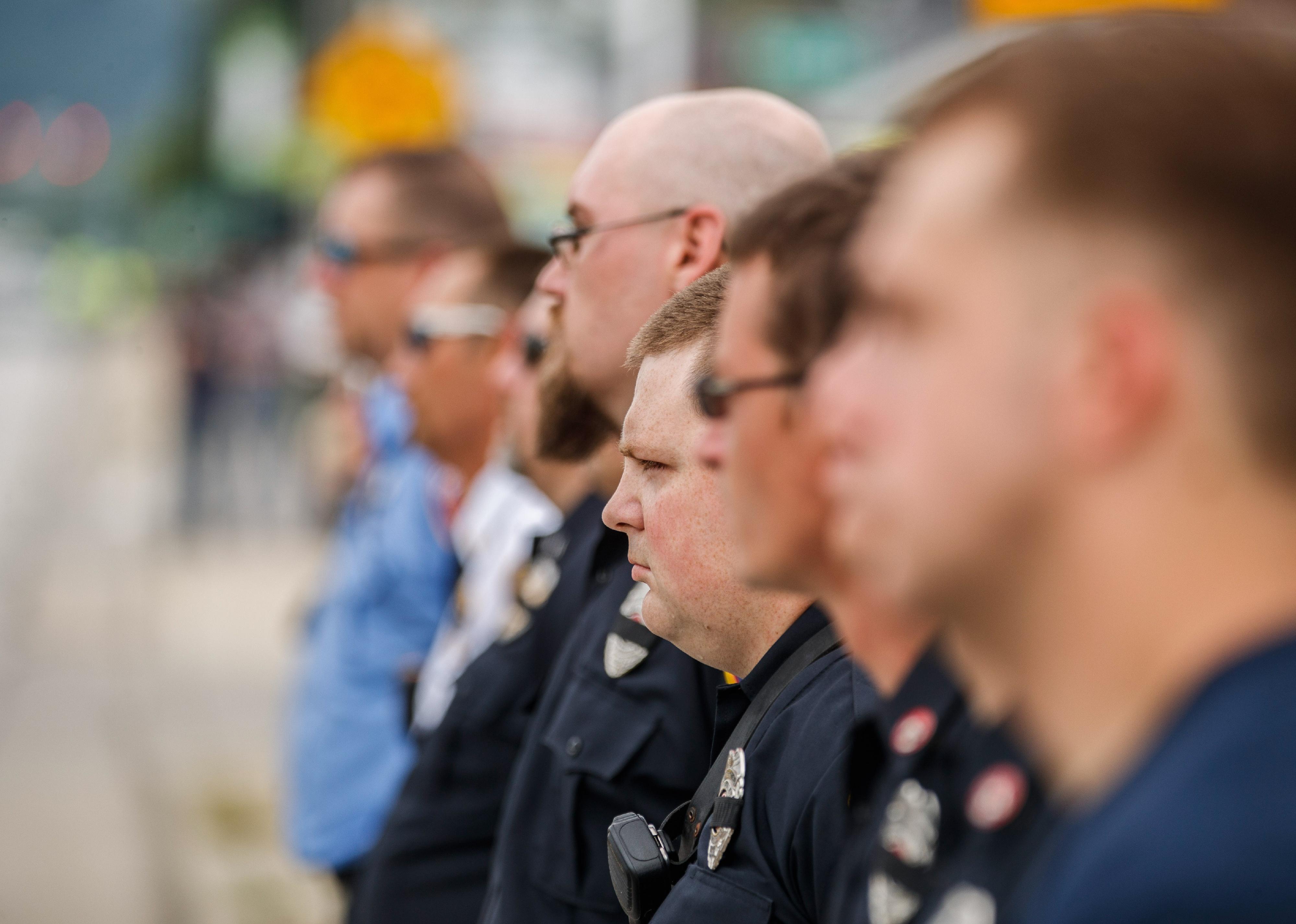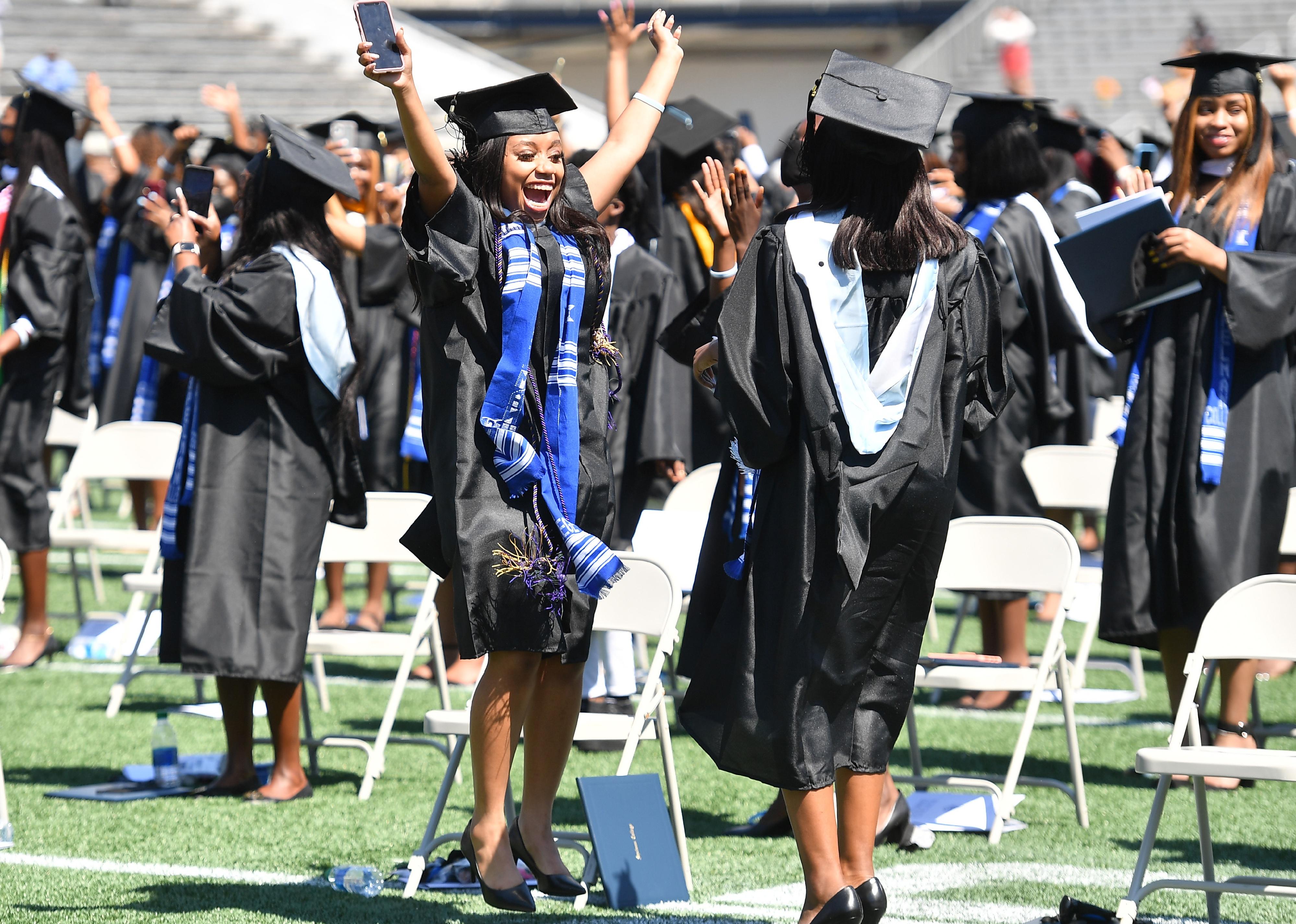From public education to Special Olympics: How 7 states spend millions from lottery ticket sales
Joe Raedle // Getty Images
From public education to Special Olympics: How 7 states spend millions from lottery ticket sales
A man buying a powerball lottery ticket.
Winning the lottery can be a dream come true—not only for the jackpot winners but for the states they play in. State revenue generated by lottery earnings often benefits charitable or civic causes—education, public employee pension funds, or the Special Olympics, for example. Throughout history, lotteries have helped pay for the construction of elite educational institutions like Yale and Harvard and even the cost of running militias that could fight the British Army during the American Revolution.
But while this revenue can help generate much-needed funding for communities and organizations, it can come at a cost to many communities as well. An investigation into state lotteries released in July 2022 underscored their impact on low-income communities. The report from the Howard Center for Investigative Journalism at the University of Maryland found that lotteries depend on low-income communities—Black and Hispanic communities, in particular.
Most states have lotteries of some kind. Alabama, Hawaii, Nevada, and Utah do not, although Alabama legislators have introduced bills to permit gambling.
OddsSeeker reviewed news and information on the various uses of lottery funds among the 50 U.S. states, according to the North American Association of State and Provincial Lotteries. The following seven states underscore the diverse ways lottery proceeds are spent—from numerous beneficiaries to guaranteed state tuition.
![]()
Canva
State that has the most lottery beneficiaries: Arizona
An evening aerial view of the Phoenix, Arizona skyline
Arizona’s lottery generated $287.83 million in the 2021 fiscal year for the 17 programs and services the state has mandated as beneficiaries. The money is allocated to four key areas: higher education, which received $38.2 million; health and human services ($29.5 million); environmental conservation ($10 million); and economic and business development ($15 million).
Among the diverse programs and services include the Tribal College Dual Enrollment Program, which allows the state’s Native American high school students to take a college course for both high school and college credit without tuition or fees, and the Arizona Biomedical Research Centre, which funds research into diseases, treatments, and cures. Other beneficiaries include an enforcement fund for internet crimes against children, teen pregnancy prevention work, and homeless services. The largest amount, $195.2 million, went to the Arizona General Fund.
Michael Loccisano // Getty Images
State that generates the most lottery revenue: New York
A kindergarten girl being served a lunch tray
New York’s lottery is the largest and most profitable in North America, ending the 2021-2022 fiscal year with $3.6 billion. All the money goes to the state’s public K-12 schools as the New York Constitution requires. The same formula used to distribute other state aid is also applied to lottery profits so that larger, lower-income school districts receive proportionally larger shares. New York City received the largest amount for the 2021-2022 fiscal year: $1.26 billion. The New York Lottery has earned $78.7 billion since 1967 for education across the state.
Raymond Boyd // Getty Images
State that earmarks lottery earnings for Special Olympics: Illinois
Richard Hunt’s The ‘Eternal Flame Of Hope,’ which symbolizes the Special Olympics’ theme of inclusion and unity as well as hope, standing outside Soldier Field in Chicago, Illinois
Illinois is the only state to earmark funds specifically for the Special Olympics, and more than $7 million has been raised so far. Special Olympics Illinois provides sports training for 20,500 athletes throughout the state and offers competition in 18 sports annually. Most of the lottery earnings—$834 million in the 2022 fiscal year—benefit K-12 public schools across the state. Since 1985, the lottery has generated $24 billion for education funding. Other beneficiaries include programs to support veterans (over $19 million); breast cancer awareness, education, and research (over $15 million); and HIV/AIDS prevention, education, and treatment (over $10.5 million).
Jeremy Hogan/SOPA Images/LightRocket // Getty Images
State that earmarks lottery earnings for pensions: Indiana
Firefighters lined up on the street in Bloomington, Indiana
Indiana’s lottery surplus benefits pension funds for teachers, firefighters, and police officers, as well as the Lottery Surplus Fund. That surplus amounted to $375.5 million for the 2022 fiscal year—25% more than anticipated. It is the only state to benefit the pensions of public employees explicitly. Since its 1989 inception, it has raised $4.9 billion for the Lottery Surplus Fund, $760 million for the police and firefighters’ pensions, and $947 million for the teachers’ pension. The surplus fund goes toward lowering excise taxes by up to 50% for owners of vehicles.
Will Newton // Getty Images
State considering using lottery earnings to upgrade a stadium: Maryland
Oriole Park at Camden Yards in Baltimore, Maryland
Profits from the Maryland lottery sent a record $673.7 million to state programs for the 2022 fiscal year, breaking the record set the year before by $6.3 million. Lottery profits go into the Maryland General Fund, which provides budgets for education, public health, safety, and other services. Lottery proceeds have also paid the debt on the bonds for two stadiums in Baltimore: Camden Yards, home of the Baltimore Orioles, and M&T Bank Stadium, where the NFL’s Baltimore Ravens play.
The Maryland Stadium Authority now wants to upgrade the stadiums completed in the 1990s. To do that, it asked the state legislature to raise the allowable bond debt for stadium projects from $235 million to $1.2 billion and increase the number of lottery proceeds that can be used to pay debt service on the bonds from $20 million to up to $90 million per year. However, the Orioles are worth about $1.38 billion, while the Ravens are valued at $3.9 billion and could sell for $4 billion. Both franchises are valuable and may not need that additional funding, which some argue could be better spent on persistent issues such as food access and vacant housing.
Paras Griffin // Getty Images
State that first earmarked lottery earnings for scholarships: Georgia
Spelman graduates celebrating during College Commencement in Atlanta, Georgia
Georgia began its Helping Outstanding Pupils Educationally scholarship program when it created its state lottery in 1993. Since then, it’s allocated $12.6 billion to Georgia students in the form of tuition grants and scholarships to attend the state’s colleges, universities, or technical colleges. Two million students have been able to attend college as a result.
States including Arkansas, Florida, Georgia, Kentucky, New Mexico, South Carolina, Tennessee, and West Virginia also offer lottery scholarships for promising students headed to college. Florida’s lottery earnings have helped 917,000 students attend college through the Bright Futures Scholarship established in 1997. In West Virginia, lottery proceeds have helped more than 64,605 students receive a PROMISE scholarship since 2002.
JOSEPH PREZIOSO/AFP // Getty Images
State that was first to run a lottery: New Hampshire
A student putting his mask back on during the Kenneth High School graduation in North Conway, New Hampshire
The New Hampshire lottery was created in 1963 to help fund education. It began as the New Hampshire Sweepstakes the following year at Rockingham Park in Salem. Players’ tickets were matched with horses; whichever horse won also determined the lottery winner.
The country’s first state-run lottery caused a national uproar in its inaugural year. According to an article in New Hampshire magazine, Reader’s Digest predicted, “Is either New Hampshire or Uncle Sam so hard up that this shabby dodge is the only way out? …. It will mean moral bankruptcy for New Hampshire.” However, it was an experiment that proved successful, allowing other states to follow suit. The 2021 fiscal year brought in $146 million for education. To date, the contributions have exceeded $2 billion.
This story originally appeared on OddsSeeker.com and was produced and
distributed in partnership with Stacker Studio.








